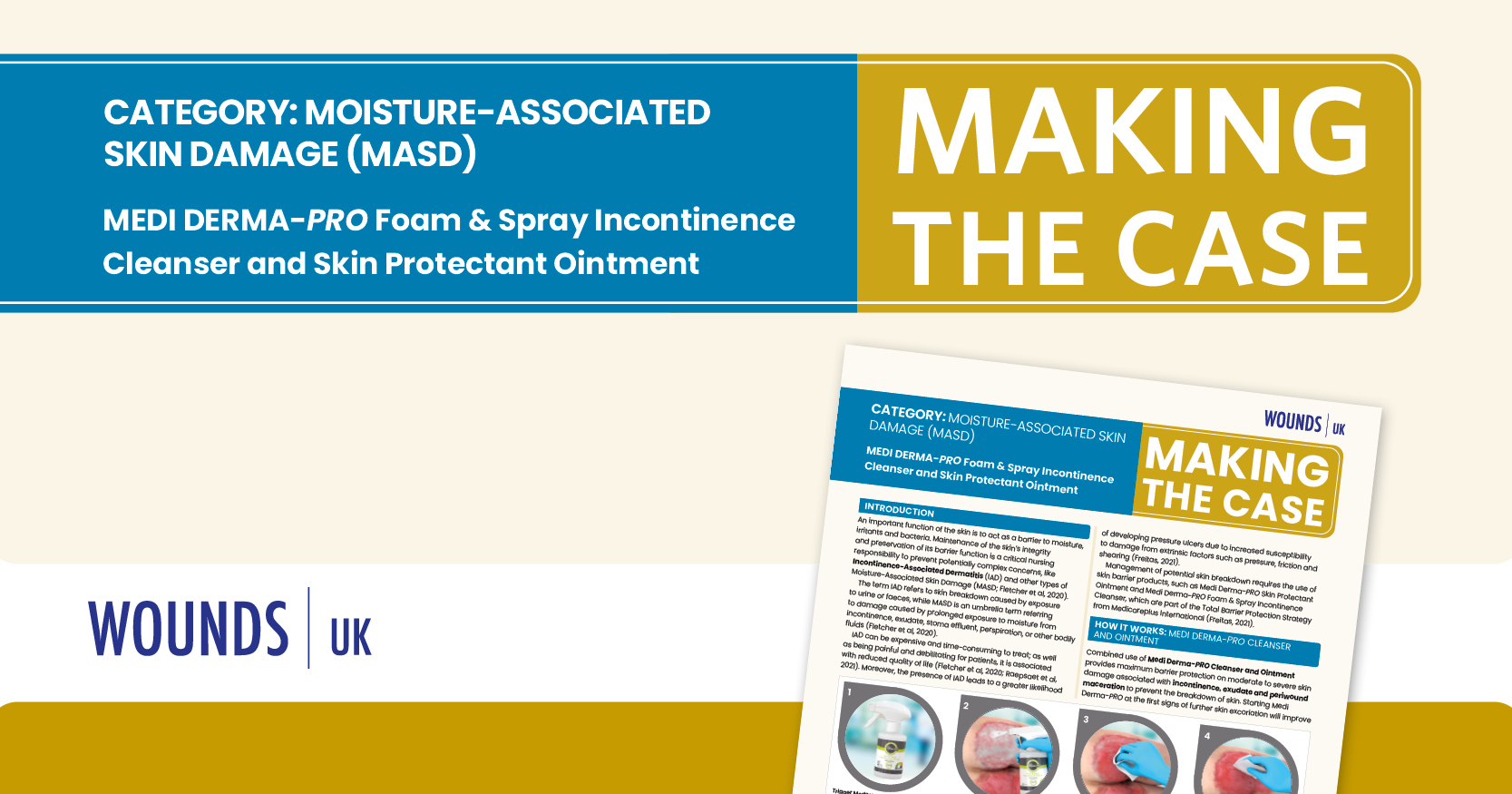References
Anderson I (2010) Key principles involved in applying and removing wound dressings. Nurs Standard 25(10): 51-7.
Baranoski S, Ayello EA (2004) Wound Care Essentials. Practice Principles. Lippencott, Williams & Wilkins, Springhouse PA.
Beeckman D, Schoonhoven L, Verhage S, et al (2009) Prevention and treatment of incontinence–associated dermatitis: literature review. J Clin Nurs 65(6): 1141-54.
Beldon P (2008) Problems encountered managing pressure ulceration of the sacrum. Br J Comm Nurs 13(suppl 12): S6-S10.
Best Practice Statement. Care of the Older Person’s Skin (second edition). Wounds UK, 2012. Available from www.wounds-uk.com
Clarke M, Black J (2011) Skin IQ™ Microclimate Manager Made Easy. Wounds International 2(2) Available at: http://www.woundsinternational.com/pdf/content_9818.pdf
Cutting K, White R (2002) Avoidance and management of periwound maceration of the skin. Prof Nurse 18(1): 33,35-6.
Defloor T , Schoonhoven L, Fletcher J (2005) Pressure ulcer classification differentiation between pressure ulcers and moisture lesions. EPUAP Review 6(3): 81-5.
Durrant J, Snape J (2003) Management and promotion of continence in rehab settings. Nurs Times 104(6): 35-6.
Fletcher J (2012) The use of a skin barrier cream in patients with incontinence. Wounds UK 8(1):130-6. Available from: https://wounds-uk.com/pdf/content_10335.pdf
Flour M (2009) The pathophysiology of vulnerable skin. World Wide Wounds. Available at: http://www.worldwidewounds.com/2009/September/Flour/vulnerable-skin-1.html
Gardner S (2012) How to Guide: Managing high exudate wounds. Wound Essentials suppl. 7(1). Available from: https://wounds-uk.com/pdf/content_10474.pdf
Haroun MT (2003) Dry skin and the elderly. Geriatr Ageing 16(6): 40-4.
Ousey K, Bianchi J, Beldon P (2012) The identification and management of moisture lesions. Wounds UK Suppl 8(2). Available from: https://wounds-uk.com/pdf/content_10467.pdf
Penzer R, Ersser S. Principles of skin care: a guide for nurses and other health care professionals. Available at: http://tinyurl.com/aygalsl
Posnett J, Gottrup F, Lundgren H, Saal G. (2009) The resource impact of wounds on health-care providers in Europe. J Wound Care 18(4): 154-61.
Rush A (2009) Bariatric care: pressure ulcer prevention. Wound Essentials 4: 68-74.
Salvo N, Barnes E, van Draanen J, et al (2010) Prophylaxis and management of acute radiation indiced skin reactions; a literature review. Curr Oncol 17(4): 94-112.
Thomas S (2008) The role of dressings in the treatment of moisture-related skin damage. World Wide Wounds. Available from: http://www.worldwidewounds.com/2008/march/Thomas/Maceration-and-the-role-of-dressings.html
Thompson G, Stephen-Haynes J (2007) An overview of wound healing and exudate management. Br J Comm Nurs Suppl. 12: s22-s30.
Turkmen A, Graham K, McGrouther DA (2010) Therapeutic applications of laevae for wound debridement. J Plastic Reconstr Aesth Surg 63(1): 184-8.
Watkins J (2011) Early identification of skin problems in older patients. Br J Healthcare Assistants 5(9): 424-8.
Wickline MM (2007) Prevention and treatment of acute radiation dermatitis; a literature review. Oncol Nurs Soc 31(2): 237-7.
World Union Wound Healing Societies (2007) Principles of best practice: Wound exudate and the role of dressings. A consensus document. London MEP Ltd







